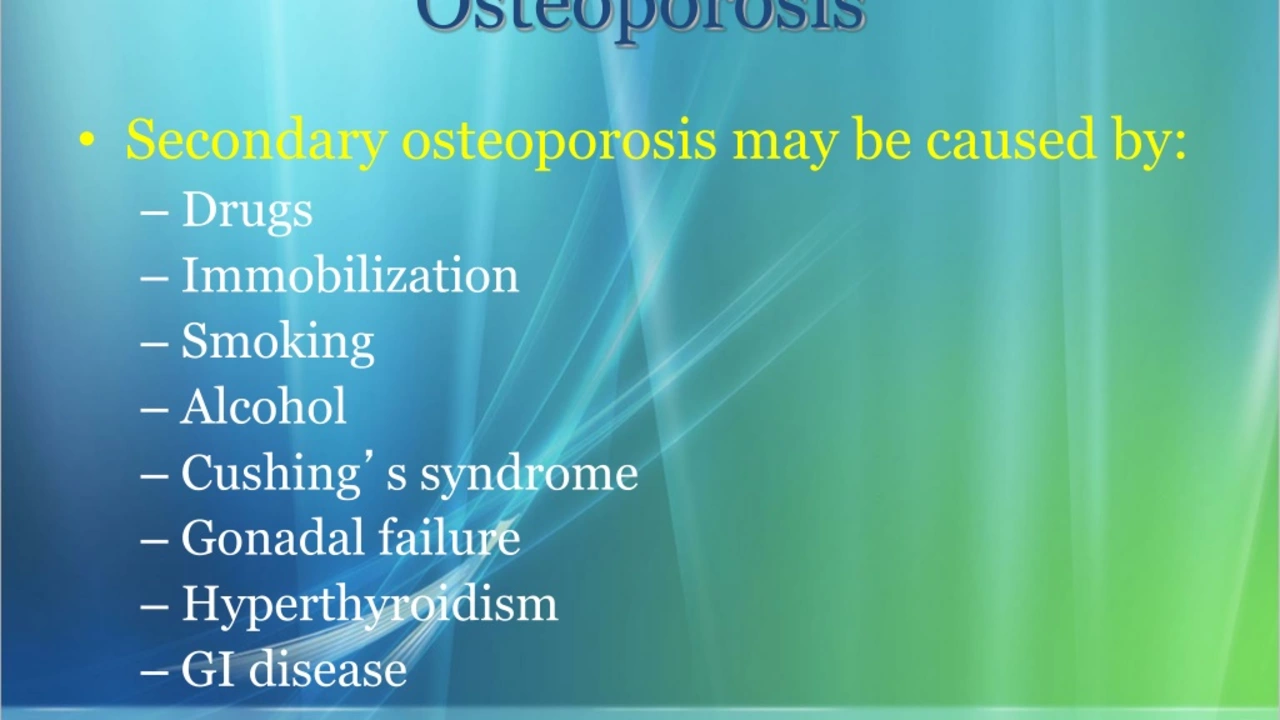Understanding Osteoporosis Risk: Simple Steps to Protect Your Bones
Osteoporosis sneaks up quietly but can cause serious problems like fractures. Knowing what puts you at risk helps you take control and protect your bones. Age is a big factor — as you get older, bones naturally get thinner. Women, especially after menopause, face higher risk due to drops in estrogen, which helps bones stay strong.
But it's not just age and gender. Lifestyle matters a lot. Not getting enough calcium or vitamin D makes bones brittle. Smoking and heavy drinking also weaken your bone structure. If you’re mostly sitting around or don’t get regular exercise, your bones lose strength faster.
Common Osteoporosis Risk Factors
Besides age and lifestyle, there are other important risks to watch out for. Family history plays a role, so if your parents had osteoporosis or fractures, keep an eye on your bone health. Certain medications like steroids can hurt bones when used long-term. Also, some medical conditions, such as rheumatoid arthritis or thyroid problems, increase risk.
Fractures from minor bumps or falls are a warning sign you shouldn't ignore. If your bones break easily, it’s time to check your bone density and talk to a doctor about prevention strategies. Addressing these risks early can prevent painful breaks later on.
Practical Tips to Lower Your Osteoporosis Risk
Good news: you can make simple choices to protect your bones. Eat plenty of calcium-rich foods like dairy, leafy greens, and fortified drinks. Get daily vitamin D through sunlight or supplements to help your body absorb calcium better. Weight-bearing exercises like walking or lifting light weights strengthen bones.
Also, quit smoking and limit alcohol. These habits quietly chip away at your bone strength. If medications or health conditions worry you, regular check-ups and bone density tests help catch problems early. Stay proactive so your bones stay strong and you avoid fractures down the road.
Understanding osteoporosis risk is the first step to stronger, healthier bones. Start small, stay consistent, and your future self will thank you for it.
The Impact of Smoking and Alcohol on Osteoporosis Risk
- Keith Ashcroft
- |
- |
- 15
In my latest research, I've delved into the impact of smoking and alcohol on osteoporosis risk. It's startling to see how both these lifestyle choices can significantly increase the chances of developing this bone disease. Smoking negatively affects bone health by reducing blood supply to the bones and slowing the production of bone-forming cells. On the other hand, excessive alcohol consumption can interfere with the balance of calcium in the body, a vital nutrient for bone health. So, if you're looking to keep your bones strong, cutting down on smoking and alcohol is a good starting point.
View more
